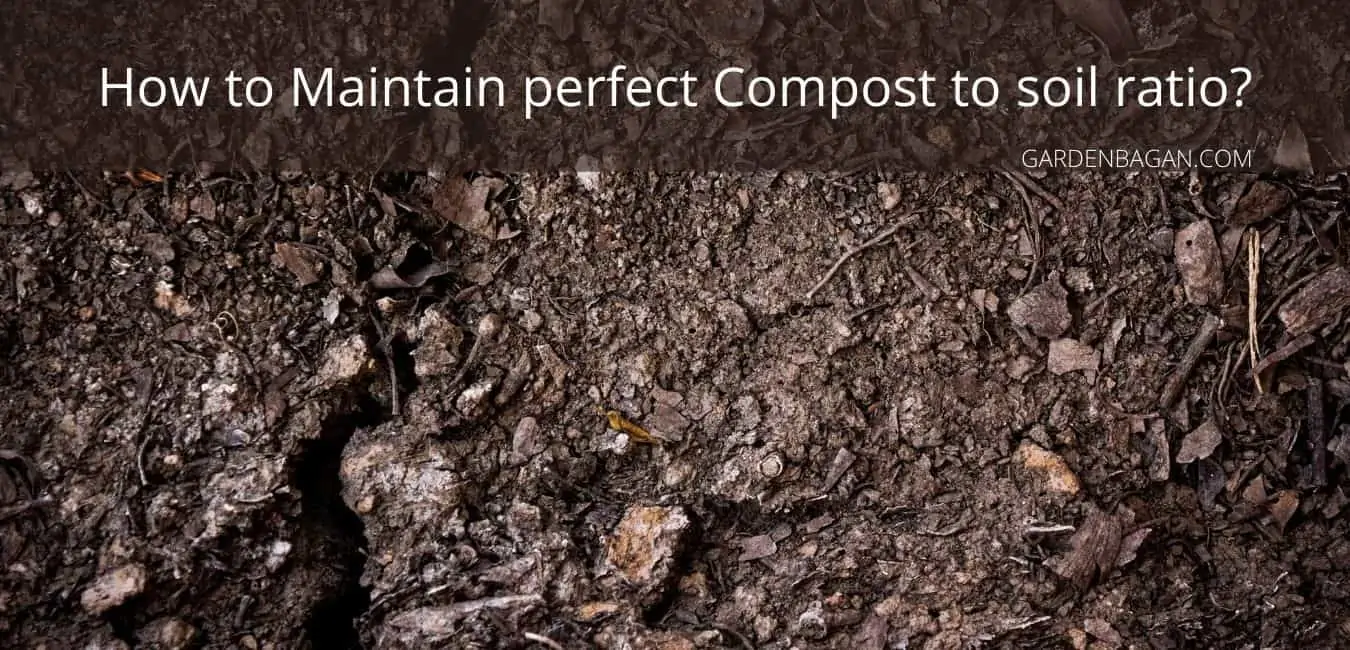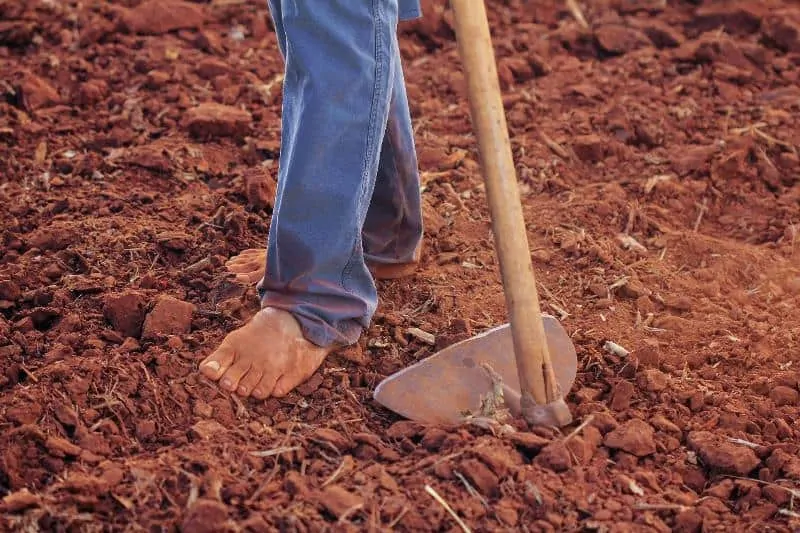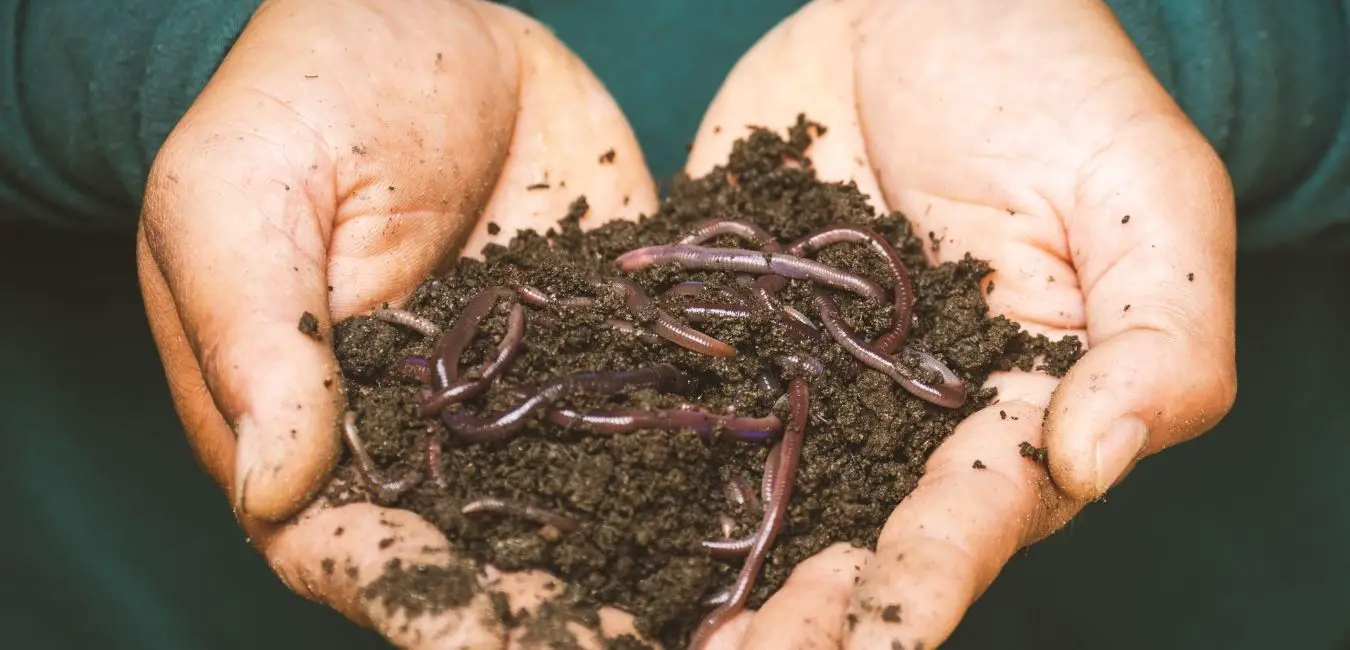Gardening is simply incomplete without Compost. no matter whether you add it or not, a healthy garden will definitely have at least 5% organic matter. These are introduced naturally. It mostly consists of dead and decaying organic matter like leaves, plants, insects, etc. We add extra compost to control the texture and nutrient level in the soil. Now maintaining the perfect Compost to soil ratio is an important task for every gardener.
Adding Compost to soil not only maintain nutrition but also increase helpful micro and macro organism. Good quality compost attracts lots of Earthworms. We know that earthworms are farmers’ friends. These creatures can add additional nutrients to the soil and keep it loose and aerated. Therefore, we consider the use of compost better than any chemical fertilizer.

Check out my previous post: Avoid 10 Common Mistakes with Beetroot Gardening
Factors to decide Compost ratio in soil
Every gardener indeed needs to use composts for better plant growth. Now, a simple yet very important question rises- What proportion of compost to use with soil. The question seems easy but the answer is not.
Different plants have different soil, water, and nutrition requirements. All these can be affected by the use of compost. Therefore we have to be cautious with the use of compost in gardens or potting soil.
You must consider some important factors before deciding the amount of compost to use. These are-
- Nature of Soil
- Type of Plant
- Water requirement of the Plants
- Average Daily Temperature
- Location of plants
Nature of soil
The quality, texture, and moisture concentration in soil are very important. There are mainly 4 variants of garden soil available worldwide. These are-
- Clay soil
- Silt soil
- Red coarse Soil
- Black Alluvial soil
There are some other variants available but these fours are common and enough for understanding.
Clay soil is dense and sticky. It has the highest moisture retention capacity but it can become hard as cement after drying. This characteristic made it unfavorable for most garden activities.
You should add 30-40% compost and at least 20% clean sand in clay soil for better performance.
Use 40% compost with Red coarse Soil. There is no need to add sand as it is already very coarse in texture.
Use only 20-30% Compost with black soil. This type of soil has a naturally high organic matter concentration. Therefore, less amount of compost is required for enriching black soil.
Finally, Silt is the best soil type for gardening. It already contains 10-15% of organic matter. That’s why you can avoid mixing any compost. Just spread a fine 1-2inch cover on top. It should be enough to feed the plants and keep the soil healthy.
Type of Plants
It is a very wide category to discuss. Different plants require different amounts of Compost in the soil.
Generally, Perennial plants require less organic matter in the soil than an annual plant. Flowers and vegetables are heavy feeders. Therefore they will require more nutrition. So add extra compost to your flower and vegetable plants.
Mature big trees require the least amount of compost to survive. They can survive with single fertilizer every year. You can feed a tree with compost in spring and leave it for next year.
Water Requirement by the plants
Compost is capable of retaining 30-40% water by its weight. Therefore, It acts as a source of moisture and nutrition for every plant. These characters can be an advantage or disadvantage depending on the nature of the plant.
A succulent or cactus requires the least amount of water as compared to any vegetable. So it better to understand the water requirement of the plant before feeding it with compost.
Unnecessary extra use of compost can attract lots of fungus and pests toward the plant. Ultimately this can lead to root rot disease.
Average Temperature
Use more compost in cold zones than in extreme hot zones. Compost can increase the soil temperature by 2 degrees. This difference is enough to save a plant from frostbite. But the sea rise in temperature can burn the plant in a hot climate.
Therefore, Adjust the use of compost according to your Average local temperature.
Location of the Plant
Finally, look out for the location of plants before applying compost. If the plant is in the full or partial shade then use less compost. Use extra compost for outdoor container plants especially if they are in direct sunlight.
Too much compost especially for shade-loving plants can make them hard and crunchy. This can be useful for leafy vegetables but not so for any flowering or fruiting plant.
Keep in mind Container grown plants require more nutrition and compost than garden plants.
Read more about How to Make Leaf mould faster in plastic bags?
How to Measure Compost?
The measurement of compost for soil preparation is a tricky job. There are several ways to decide the perfect composition. But to measure it correctly is a different work.
The technicality is with measuring the quality over quantity. You can measure the quantity of compost with any pot, container, or bucket. Mostly it is used in proportion to the garden soil.
normally 1:1 or 1:2 compost ratio suggest 1 part compost mixed with 2 equal part garden soil. We usually don’t weigh the compost for garden use. But commercially compost is mixed by proportion to its weight with garden soil.
Simply 1:2 proportion means 5-pound compost is mixed with 10 pounds of garden soil. The physical proportion can differ in these two techniques. The difference occurs due to the amount of moisture and texture of soil being used.
You can use it either way. the main consideration should be in measuring the quality of Compost.
You prefer old dry compost over fresh one. This is important because fresh compost is wet and still decomposing. It will release more heat and consume some nutrients during the decomposition process. Overall it can cause a deficiency of specific nutrients in the soil.
Therefore, You must leave the compost to decompose completely at least for 4-6 months. 1 or 2-year-old cow dung compost is ideal for any vegetable or flower garden.
The quality of any compost can be measured with the proportion of undecayed organic matter and the amount of moisture left in it. If you find a significant amount of moisture and leftovers then give it some more time to decompose.
Ideal compost should be dry and finely granular in texture.

Compost to soil ratio for Vegetable Garden
Most vegetables are heavy feeders especially if they are annual or seasonal. 40-50% compost is suggested for container vegetable gardening. In open gardens use at least 30-40% compost with the soil. Extra compost cover on the topsoil is ideal for vegetable gardening.
Some vegetables like peppers, eggplants, tomatoes, and Cucumber or melons require more compost than others. I have successfully tried 60-70% cow dung compost with only 30-40% garden for these vegetables.
Minimum 50% compost is required for my vegetable. therefore, the ideal compost to soil ratio for a vegetable garden is 1:1. Simply use equal part soil and compost for your vegetable plants.
Check out: Will Tomatoes Grow in Shade?- Kitchen garden facts
Amount of Compost in soil for Flower plants
Flower plants are generally of two types- Annuals and Perennials. Therefore, The concentration of Compost must carry according to their specific need. Also, summer flowers have different compost requirements than winter or fall flowering plants.
Use 1 part compost with 4 part garden soil for Summer flowers. 1:4 ratio or 25% compost concentration is enough for most perennial flowers and summer flowers.
You must increase the amount of compost for cold or fall season flowers. Use 30-40% compost for winter or spring bloomers.
25-30% compost with 60-70% garden soil and peat moss must be sufficient for most of the flowering plants. Keep in mind big perennial flowering plants require much less compost than other seasonal flowers.

Read more about Common Tuberose Pests and Diseases with Solution
Compost to soil ratio for Succulents and Cactus
Use only 15-20% compost with 60% garden soil and 20-25% clean sand for succulents and cactus plants.
Succulents and Cactus require low moisture and nutrient concentration than other indoor plants. That’s why reducing the amount of compost and increasing sand value can maintain the moisture level.
Some professionals suggest even less compost value. Although this amount of Compost works well for most succulent and cactus varieties. I am using this mix for over a decade and it works for my plants.
Comercial succulent or cactus soil mix contains 10-20% compost with perlite sand and red soil. Red soil is less moisture absorbent and gives a coarse hard desert texture to the soil mix.
Potting soil to compost ratio
The commercial potting mix already contains various organic ingredients. Therefore, use only 15-20% good quality Compost with commercial potting mix.
Add at least 30-40% organic compost and 10% cocopeat or sand with plain garden soil. Plants potted in containers are usually heavy feeders. They have a much smaller soil area compared to open gardens. Therefore, Potted plants require more nutrients than plants growing in your garden.
If you are planing for heavy feeders especially vegetables like pepper or tomatoes. Then mix 50-60% compost with 30% garden soil and 10% sand and peat moss.
Keep in mind this combination will carry for different plants and locations. Especially use low compost concentration for indoor plants.
Maintain Compost to Soil Ratio in your Lawn
The grass is a heavy feer yet you need not apply too much compost to your lawn. Just spread a 1-2 inch thin layer of compost over the lawn area before seeding.
Repeat this step after 45-50 days of germination. Make sure the grass is tall enough to head out of the compost cover.
Look out for any extra compost deposit of the leaf blades or the grass itself. You should water just after composting. This will remove the compost from the grass and settle it down near the root portion.
1:6 ratio of compost is enough for lawn fertilization. It should feed the grass for at least 2 months.
What is the best ratio of compost to the soil?
1:3 is considered the best compost to soil ratio for gardening. Keep in mind the nutrition concentration can carry in open ground. So It is recommended to keep a thorough knowledge about the plant requirement before applying extra compost.
Outdoor plants especially platted in containers require more compost than garden plants. Therefore use a 1:3 portion of compost to soil to keep your plants happy. Don’t worry you are free to make some adjustments and changes. It will not harm the plants.
How much compost do I add to my soil?
A general rule suggests adding a minimum of 20-30% compost in the soil mix. Although you may have to use more compost for vegetables, flowers, and other fast-growing annual plants.
Therefore you can use 1 part compost with 4 to 5 parts of garden soil (1:4 or 1:5) for any plant type. You can add extra compost as topping for the heavy feeders. Otherwise, nothing more is required for your soil mix.
Do you need to mix compost with soil?
It is good to mix compost with soil especially if you are preparing a potting mix. Through the mixing of compost will distribute nutrients evenly in the soil. This will help in maintaining a unanimous soil texture.
Sometimes it is enough to simply put compost over the soil surface. But mixing it with soil has many advantages. The proper soil compost mix will have a uniform texture, even moisture retention, and a balanced ph level. It can easily save a plant from many soil bourne problems and diseases.
Can too much compost hurt plants?
It is a heartbreaking fact that too much compost can hurt your plants. This is common especially when the compost is fresh and wet.
Fresh compost releases high concentration ammonia. Also, the decomposition of organic matter is an exothermic reaction. It simply means decaying compost will release heat. Therefore, Too much compost and induce high heat and Nitrogen concentration in the soil.
This can cause a burning effect followed by severe root and stem rot. Actually, the high ammoniacal concentration will start decomposing the plants themselves.
That’s why a definite amount of compost is suggested for different plant types. Too much of anything is always harmful.
Can you just put compost on top of the soil?
Yes, you can definitely put compost on the top of the soil. This will slowly feed the plants and act as healthy mulch.
Although mulching with compost will not stop weed growth still it can reduce their spread.
Putting compost on the topsoil will nourish the soil and prevent it from compacting around the root ball.
There is a unique advantage of this technique. The compost on top of the soil will lose the soil texture. Every alternate layer will act as a breeding ground for microbes and earthworms. It can easily enrich the soil around the root ball without any physical effort.
Most of the time you won’t have to till or dig the soil for compost application. Just spread it on the top and keep watering at regular intervals.
How much compost to use in Raised Beds?
You should use 30% compost in the soil mix for Raised Beds. The ideal soil composition for raised garden bed is 3:1:6 i.e., 3 part compost with 1 part Sand and 6 part garden soil.
This soil mix will work well for both flower and vegetable plants. This composition will feed the plants for 2-3 months. An additional 2-3 inch compost cover at the top of the raised bed is recommended.
Only use complete dry, clean, and well-aged compost for raised beds. Cowdung manure or vegetable compost is easily available and best to use for Raised garden beds.
Check out –Is dog poop good fertilizer-How to compost it?
What is your best compost to soil ratio? Let us know in the comments
Keep Reading Keep gardening!
